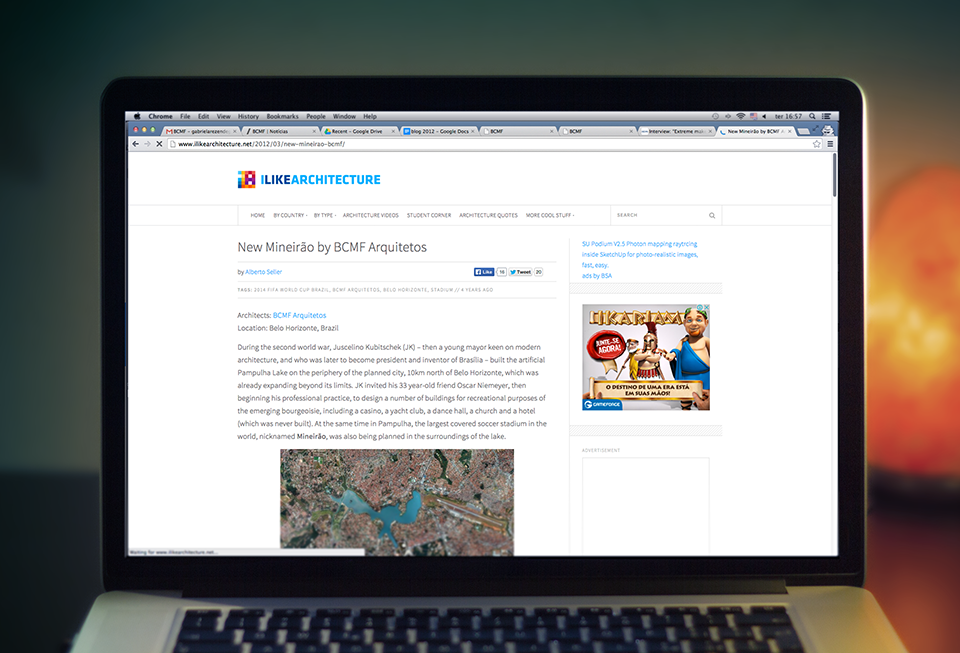I LIKE ARCHITECTURE - New Mineirão
Postado dia 22 de março de 2012 em Notícias

During the second world war, Juscelino Kubitschek (JK) – then a young mayor keen on modern architecture, and who was later to become president and inventor of Brasília – built the artificial Pampulha Lake on the periphery of the planned city, 10km north of Belo Horizonte, which was already expanding beyond its limits. JK invited his 33 year-old friend Oscar Niemeyer, then beginning his professional practice, to design a number of buildings for recreational purposes of the emerging bourgeoisie, including a casino, a yacht club, a dance hall, a church and a hotel (which was never built). At the same time in Pampulha, the largest covered soccer stadium in the world, nicknamed MINEIRÃO, was also being planned in the surroundings of the lake.
In December 2010, the MINAS ARENA Consortium commissioned BCMF Architects to review and deliver the design as part of the Public Private Partnership (PPP) of the renovation of the Mineirão Stadium, one of the venues for the 2014 FIFA World Cup. The new complex aims to go beyond its primary role as world-class sports venue, also offering a range of services, retail, culture and entertainment for the city, becoming a new hub daily of activities linked to the touristic Pampulha complex through a landscaped platform that unfolds as a 80,000m2 public plaza adapting to the existing topography. This multi-functional sculpted ‘esplanade’ also reinforces, through the empty spaces around the stadium, the monumental iconography of the original architecture of the Mineirão, whose 1960s facade is heritage listed. Inside the Stadium, 64,000 seats will have improved visibility for sports and events: the upper tier will be kept almost as original, while the lower tiers will be completely rebuilt in a new configuration, including business suites and hospitality areas, closer to the pitch and with the required sightline improvements.The reconstruction is a model in the country when it comes to sustainable initiative. One of the goals is to obtain the LEED certification. For that, the new stadium already prioritizes tools, patterns, and procedures internationally recognized as environmentally friendly and sustainable. Since the beginning of the work in 2010, a LEED consultancy service has been hired in order to keep up with the development and to control the process as well as a rigorous archive of all documents needed for the certification. The procedure allows for the control of the implementation of sustainable practices before the Green Building Council Institute (GBCI), the US organization which certifies the development.